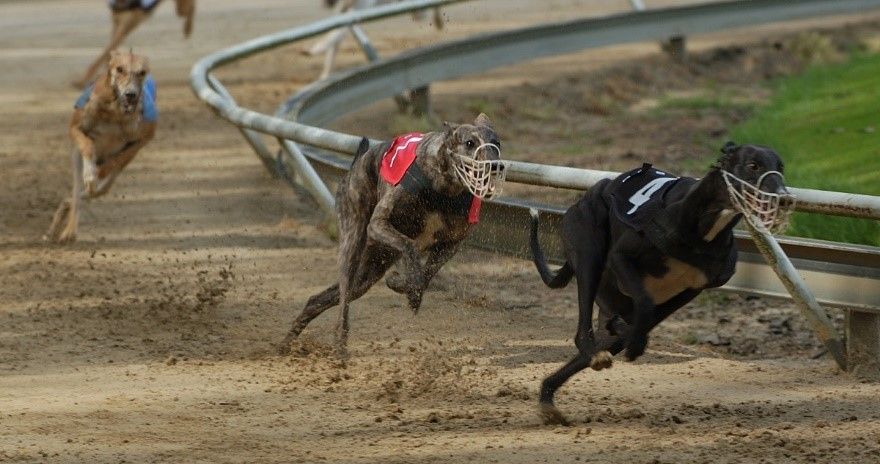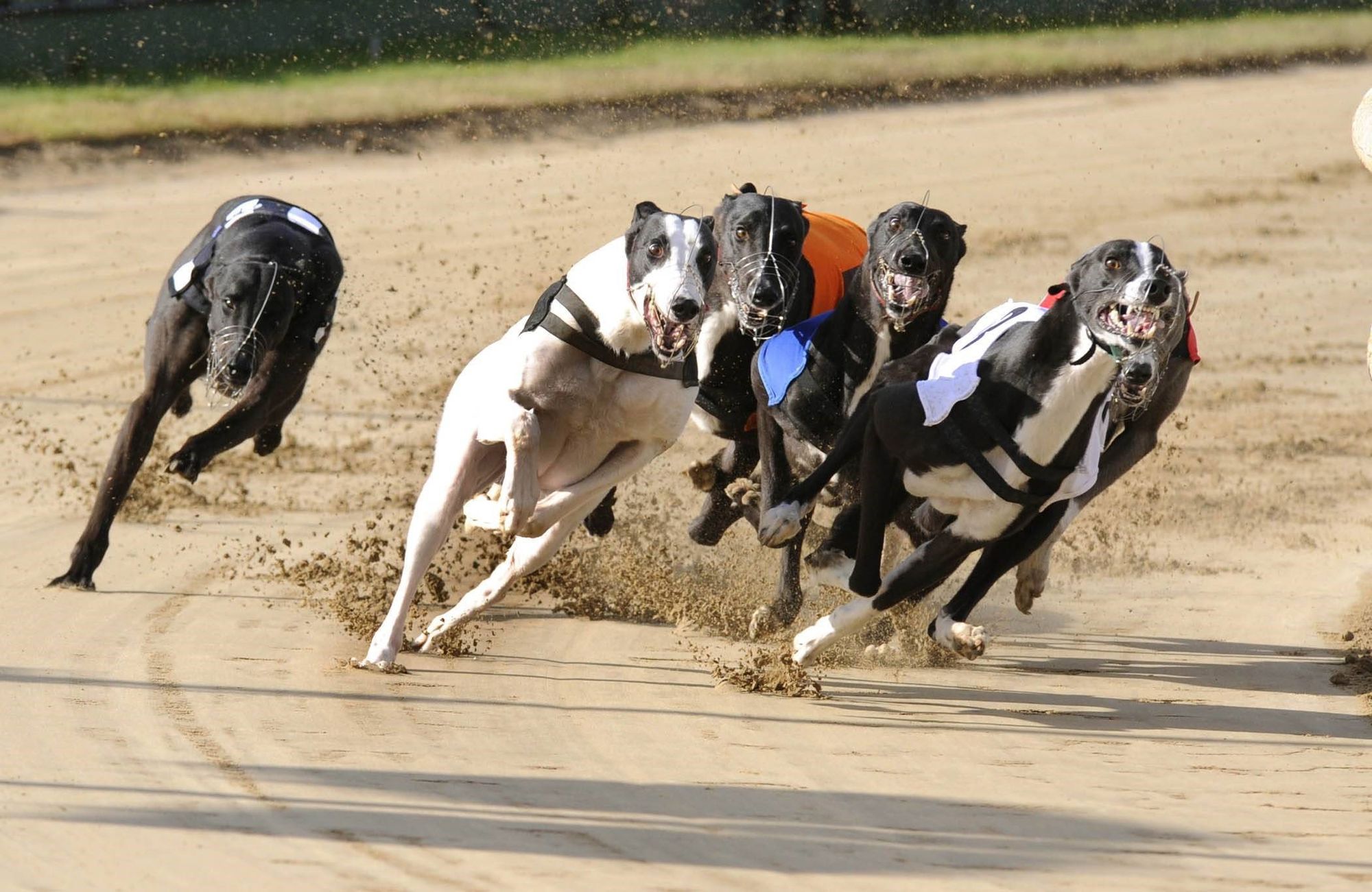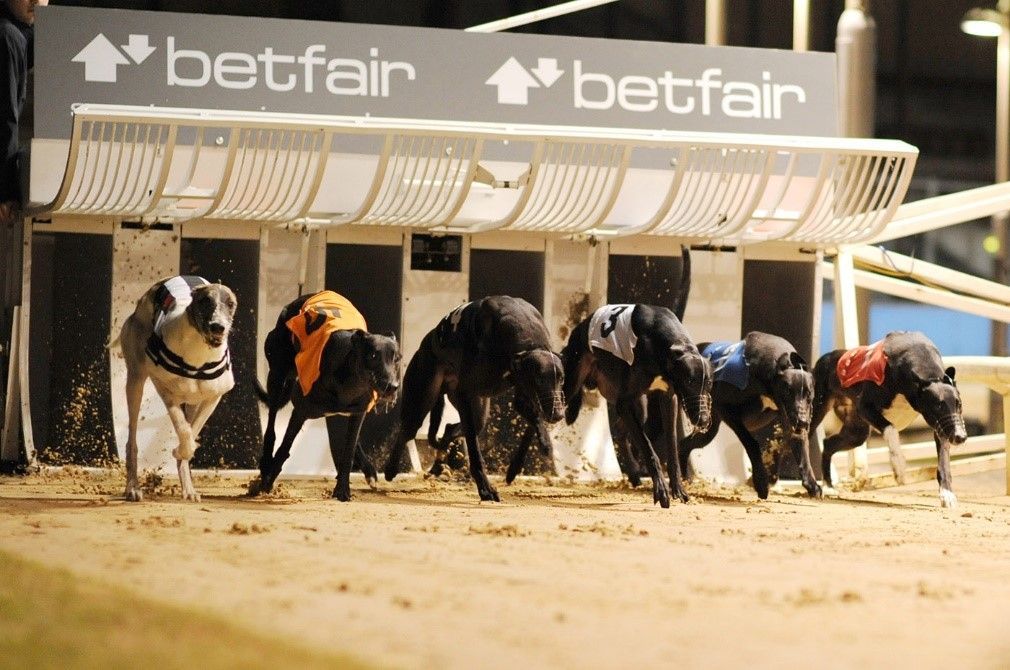Greyhound racing is governed by a set of rules, similar to any other sport. The race involves six greyhounds running after a mechanical "hare" for a specified distance, and the first dog to cross the finish line is the winner. The second and third dogs in the race are also considered winners.
Specific regulations exist in animal sports, including the use of lightweight and durable muzzles for each greyhound. These muzzles do not hinder the dogs from opening their mouths during the race but serve as a preventive measure in case of aggressive behaviour or fights at the finish line.

Starting boxes are positioned at the beginning of the route, with each greyhound launched into them through rear doors and released through front bars raised at the start. All races use a standard colour scheme: the first box on the inside of the track is red, followed by blue, white, black, orange and black and white stripes. The colour of the racing jackets dogs are wearing must match the colour of their starting boxes. A draw is used to distribute dogs into boxes taking into account the manner in which the dog runs along the track. So, if the greyhound is used to running closer to the inside of the track, it will get the appropriate box. It is clear why this is done: otherwise the runner will strive for his usual position on the track, which could interfere with others.
A "mechanical hare" moves along the outer perimeter of the track, driven by an electric motor, and is typically made from hare skin or a similar material. The length of the running track varies, with standard lengths ranging from 380 to 520 metres, and different standards adopted in various countries.
The length of the running track can vary, usually from 380 to 520 m with the standard length for most racecourses is 480 m. In Australia, a different standard has been adopted - 515 m. There might be sprint distances from 200 to 300 m, stayer distances from 585 to 1800 m and also obstacle races.

Races are categorised by difficulty level, and greyhounds are assigned to classes based on their track record and past race results. Only dogs that have passed mandatory veterinary examinations are allowed to compete, and measures against doping are rigorously enforced.
The sporting career of greyhounds begins around 13-15 months and typically concludes by 4-6 years. Dogs in top condition may be sent to breeding nurseries, while others are cared for by Animal Welfare Societies and placed in families as pets.
Typically, females and males run in different races, and the competition in the race is always between the same breed.
Greyhounds run at high speeds, and determining the winner can be challenging. Photo finishes are utilised to accurately identify the first dog to cross the finish line. Before each race, the dogs are presented to the public, and a sports commentator provides details about each dog, its owner, trainer, accomplishments, and chances of winning. The dogs are brought into the boxes, upon a specific command. The bars on the boxes rise, and the greyhounds eagerly chase after the "hare." Bets are placed as the roar of the stands overwhelms the commentator's voice. The race lasts for just under a minute, yet for fans who've placed bets, it can feel like an eternity.

The race itself, lasting less than a minute, generates intense excitement among fans who place bets. The finish is met with anticipation, and slow-motion replays of the most thrilling moments are displayed on large screens. Greyhounds can participate in multiple races on the same day, with trainers ensuring their well-being and readiness for subsequent competitions.
With careful treatment of the athletes and respect for competition traditions, greyhound racing can continue to provide entertainment and relaxation for many enthusiasts, ensuring its future as a popular sport.

